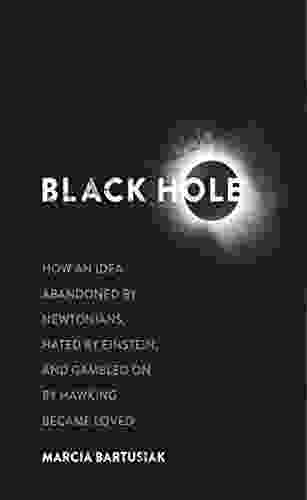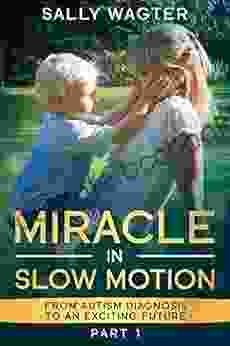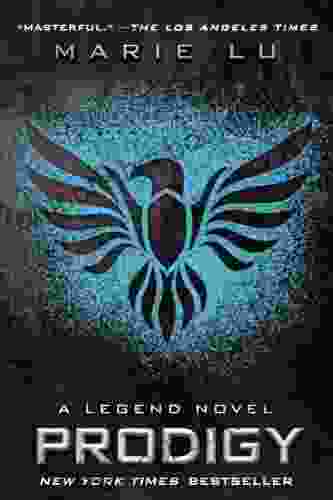How an Idea Abandoned by Newtonians, Hated by Einstein, and Gambled on by Hawking Revolutionized our Understanding of the Universe

In the annals of scientific history, there are few ideas as polarizing and transformative as the concept of black holes. Today, these celestial enigmas are widely accepted as fundamental components of our universe, playing a pivotal role in shaping the fabric of spacetime and dictating the fate of stars and galaxies alike.
4.5 out of 5
| Language | : | English |
| File size | : | 4979 KB |
| Text-to-Speech | : | Enabled |
| Enhanced typesetting | : | Enabled |
| Word Wise | : | Enabled |
| Print length | : | 252 pages |
| Lending | : | Enabled |
| Screen Reader | : | Supported |
However, the path to our current understanding of black holes was far from straightforward. It was an arduous journey marked by skepticism, fierce debate, and the tireless work of a visionary few who dared to challenge the prevailing scientific orthodoxies of their time.
The seeds of the black hole concept were first sown by John Michell, an English geologist, and astronomer, in 1784. Michell proposed the existence of "dark stars," objects so massive that their gravitational pull would prevent even light from escaping their clutches. However, this radical idea gained little traction among Newtonians, who believed that the universe was governed by deterministic laws and that all objects, regardless of their mass, would adhere to these laws.
A century later, Pierre-Simon Laplace, a French mathematician and astronomer, independently came up with a similar concept. However, his ideas were also met with skepticism, this time from the scientific community at large. The prevailing view was that black holes were simply mathematical curiosities, devoid of any real physical significance.
It was not until the early 20th century that the concept of black holes began to gain serious scientific legitimacy. In 1915, Albert Einstein published his groundbreaking theory of general relativity, which revolutionized our understanding of gravity. Einstein's theory predicted the existence of black holes, but he himself was skeptical of their existence, dismissing them as "singularities," mathematical artifacts with no real physical counterpart.
Undeterred by Einstein's skepticism, a young Indian physicist named Subrahmanyan Chandrasekhar continued to explore the implications of general relativity for the fate of massive stars. In 1930, Chandrasekhar showed that stars above a certain critical mass, known as the Chandrasekhar limit, would inevitably collapse under their own gravity, forming a black hole.
Chandrasekhar's work was met with fierce opposition from the scientific establishment, including Einstein himself. Many physicists refused to believe that stars could collapse to such extreme densities, arguing that some unknown force would intervene to prevent such a catastrophic event.
However, in the decades that followed, observational evidence began to mount in support of Chandrasekhar's theory. In 1967, Jocelyn Bell Burnell and Antony Hewish discovered pulsars, rapidly rotating neutron stars that emit intense beams of radiation. Pulsars were seen as the remnants of massive stars that had collapsed into black holes, providing the first indirect evidence for their existence.
In 1974, Stephen Hawking made a groundbreaking contribution to the study of black holes. He showed that black holes are not entirely black after all. Instead, they emit a faint glow known as Hawking radiation, which is caused by the quantum vacuum fluctuations at the event horizon, the boundary beyond which nothing can escape.
Hawking's discovery had profound implications for our understanding of black holes. It showed that they are not static objects but rather dynamic entities that interact with the universe in complex ways. It also opened up the possibility of studying black holes using astronomical observations, as Hawking radiation can be detected by telescopes.
Today, black holes are recognized as one of the most fascinating and enigmatic objects in the universe. They are the ultimate laboratories for studying gravity, spacetime, and the fundamental nature of reality. And their existence is a testament to the power of human ingenuity and the audacity to challenge the limits of our knowledge.
In this captivating book, we will explore the extraordinary journey that led to our current understanding of black holes. We will trace the evolution of this groundbreaking idea from its humble beginnings to its transformative impact on modern physics and cosmology.
Along the way, we will meet the brilliant minds who dared to challenge the prevailing scientific wisdom and risked their reputations to pursue this radical concept. We will also delve into the latest scientific discoveries, including the groundbreaking observations of black holes by the Event Horizon Telescope.
Whether you are a seasoned physicist or a curious layperson, this book will take you on an unforgettable journey to the heart of one of the most captivating mysteries in the universe.
4.5 out of 5
| Language | : | English |
| File size | : | 4979 KB |
| Text-to-Speech | : | Enabled |
| Enhanced typesetting | : | Enabled |
| Word Wise | : | Enabled |
| Print length | : | 252 pages |
| Lending | : | Enabled |
| Screen Reader | : | Supported |
Do you want to contribute by writing guest posts on this blog?
Please contact us and send us a resume of previous articles that you have written.
 Book
Book Novel
Novel Page
Page Chapter
Chapter Text
Text Story
Story Genre
Genre Reader
Reader Library
Library Paperback
Paperback E-book
E-book Magazine
Magazine Newspaper
Newspaper Paragraph
Paragraph Sentence
Sentence Bookmark
Bookmark Shelf
Shelf Glossary
Glossary Bibliography
Bibliography Foreword
Foreword Preface
Preface Synopsis
Synopsis Annotation
Annotation Footnote
Footnote Manuscript
Manuscript Scroll
Scroll Codex
Codex Tome
Tome Bestseller
Bestseller Classics
Classics Library card
Library card Narrative
Narrative Biography
Biography Autobiography
Autobiography Memoir
Memoir Reference
Reference Encyclopedia
Encyclopedia Franya J Berkman
Franya J Berkman Franz Kafka
Franz Kafka Francine Falk Allen
Francine Falk Allen S D Rowell
S D Rowell Scaachi Koul
Scaachi Koul Fred Khumalo
Fred Khumalo Frederic Gosset
Frederic Gosset Sylvia Jukes Morris
Sylvia Jukes Morris Peter Ford
Peter Ford Robert E Moyer
Robert E Moyer Mark David Abbott
Mark David Abbott Viola Grace
Viola Grace Vicky Franchino
Vicky Franchino Rylee Tipton
Rylee Tipton Thaddeus Hatter
Thaddeus Hatter Frank Berrios
Frank Berrios Francis L Macrina
Francis L Macrina Francis Su
Francis Su Hunter Riley Iii
Hunter Riley Iii Quinn Loftis
Quinn Loftis
Light bulbAdvertise smarter! Our strategic ad space ensures maximum exposure. Reserve your spot today!
 Aron CoxFollow ·5.5k
Aron CoxFollow ·5.5k Ethan GrayFollow ·15.3k
Ethan GrayFollow ·15.3k Peter CarterFollow ·12.3k
Peter CarterFollow ·12.3k Gerald BellFollow ·4.2k
Gerald BellFollow ·4.2k Ruben CoxFollow ·5.5k
Ruben CoxFollow ·5.5k Darnell MitchellFollow ·18k
Darnell MitchellFollow ·18k Alexandre DumasFollow ·17.7k
Alexandre DumasFollow ·17.7k Reginald CoxFollow ·17.8k
Reginald CoxFollow ·17.8k

 Howard Blair
Howard BlairHeroes and Villains from American History: The Biography...
David Dixon...

 Felipe Blair
Felipe BlairAn Informal History of the 1920s: Uncovering the Roaring...
The 1920s, an era...

 Howard Blair
Howard BlairHow a Peculiar Victorian Zookeeper Waged a Lonely Crusade...
In the enigmatic world of Victorian...

 Harold Powell
Harold PowellMemoir of Food, Wine, and Love in Italy: A Culinary...
Prepare your senses...
4.5 out of 5
| Language | : | English |
| File size | : | 4979 KB |
| Text-to-Speech | : | Enabled |
| Enhanced typesetting | : | Enabled |
| Word Wise | : | Enabled |
| Print length | : | 252 pages |
| Lending | : | Enabled |
| Screen Reader | : | Supported |














